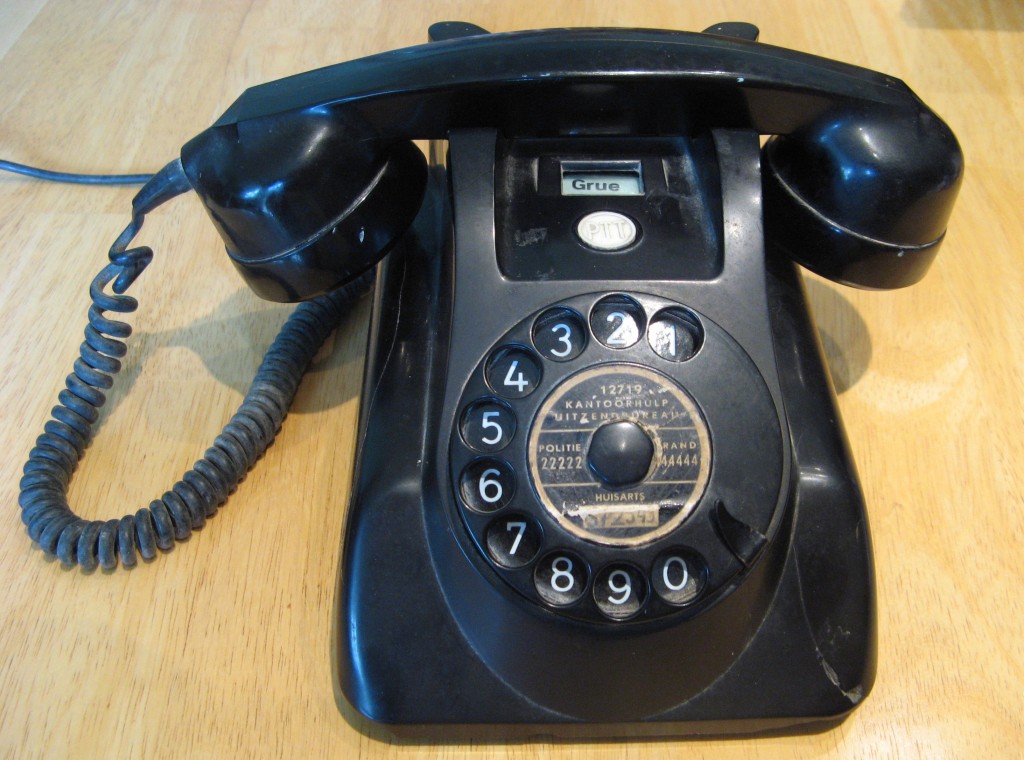So I started with this phone, but it’s full of phone guts that aren’t going to help the project at all.
So, flip it over, and it’s easy to open up. Â One of the screws has already been broken off, but that’s not too surprising for a phone that’s 60 years old.
Once inside, you can see the dial mechanism. Â It was really thoughtful of them to put it in clear plastic. Â Maybe in a little while I’ll post a movie of it working.
The guts of the phone are really clean. Â I’m guessing that whoever sold me the phone cleaned this up before I got it. Â Up front you can see the bells. Â After I’m all done, I’d love to see if I can still ring them somehow.
On the right is a capacitor labeled “PTT”, so I’m guessing that it powers the intercom system. Â On the top/back of the picture is a black bar that the “hook” pins press down on. Â In the center is the leaf switch for the PTT button.
On the right is a big honking transformer, plus some other stuff that probably constitutes the “brains” of the phone. Â In the back you can see the terminal block used to configure the phone.
A few tools, some judicious diking, and about 30 minutes, and the unnecessary parts are removed, the switches for the hook and PTT buttons and their support are still inside and functional, and the cord is removed.
I left the bells inside in the hopes that I can rig the arduino to use them somehow.




4 Comments
Old as this post is. I would like to add the following. PTT was the name of the state operated telecom company in the Netherlands. The company has since been privatized and has a new name. The words this abbreviation stands for, translate to English words having the same starting letters. Post (Post/Postage), Telegraaf (Telegraph) and Telecomunicatie (Telecommunication). The button itself could have any of several purposes.
Thanks for the information. I still haven’t decided what I’m going to do with that cool old dutch phone. Now that the raspberry pi 2 is out and has enough processing power to do speech recognition, maybe I’ll do a version where you interact with it by listening to descriptions and speaking the commands…. if I ever have the time for that kind of a project.
2 Trackbacks